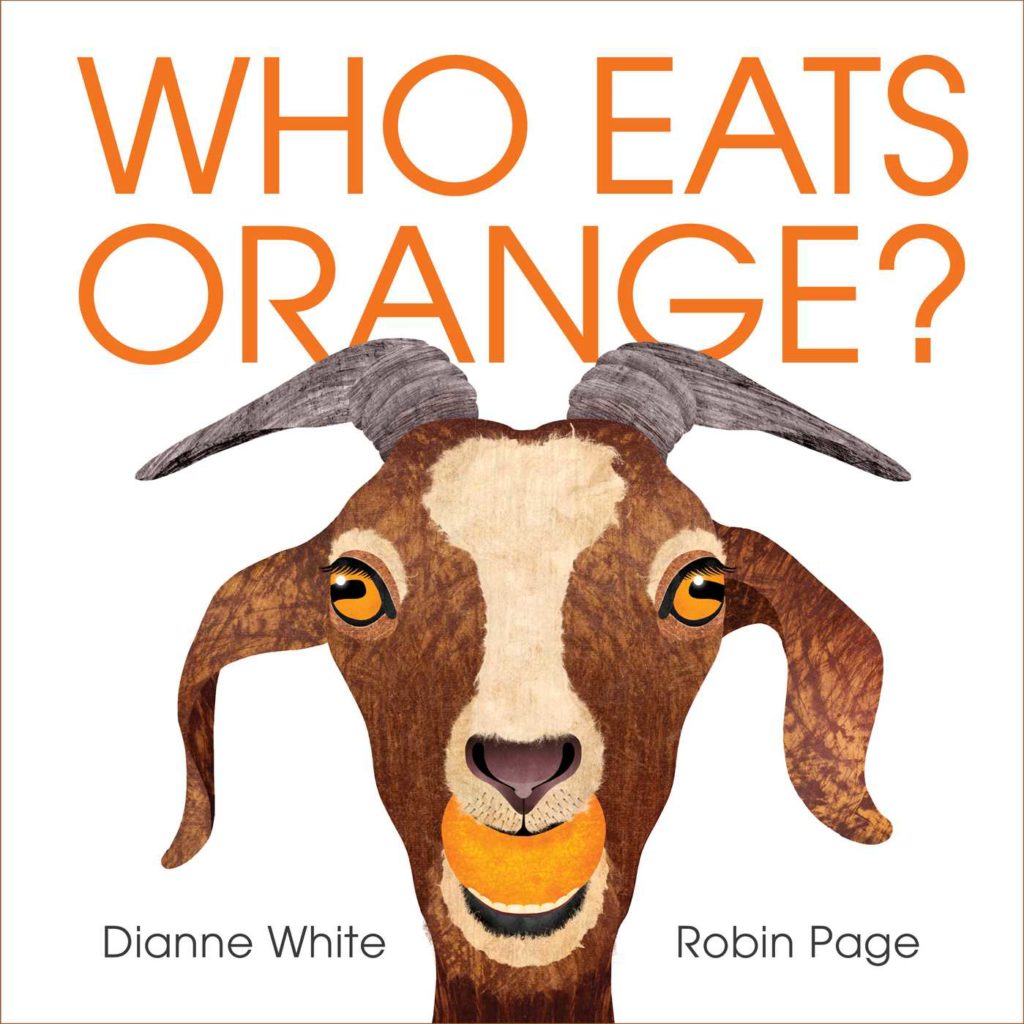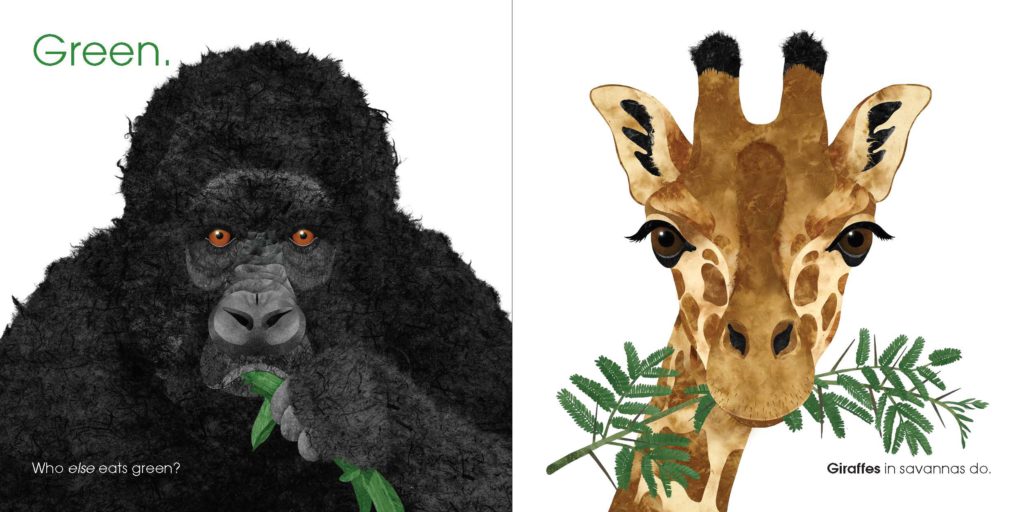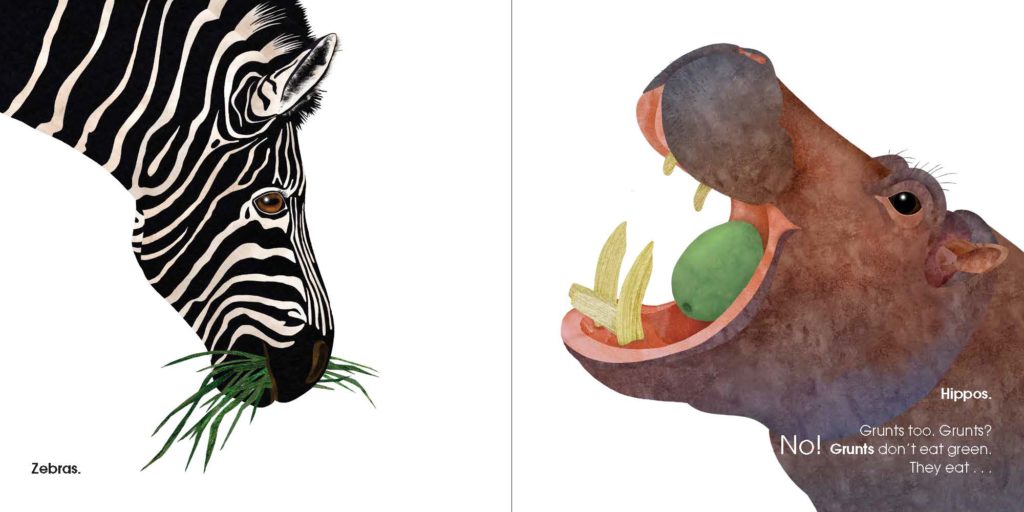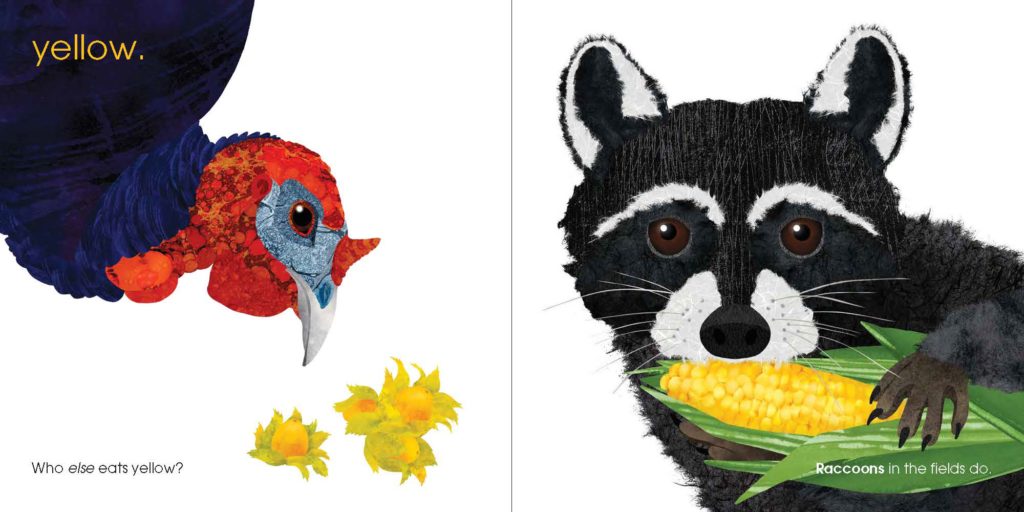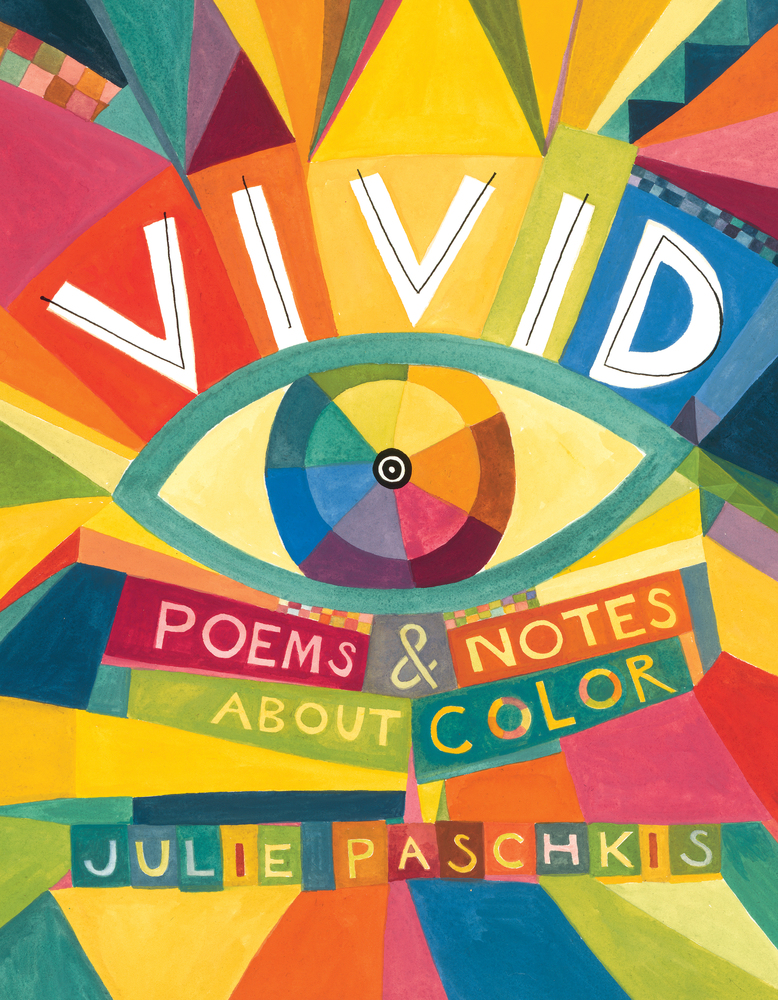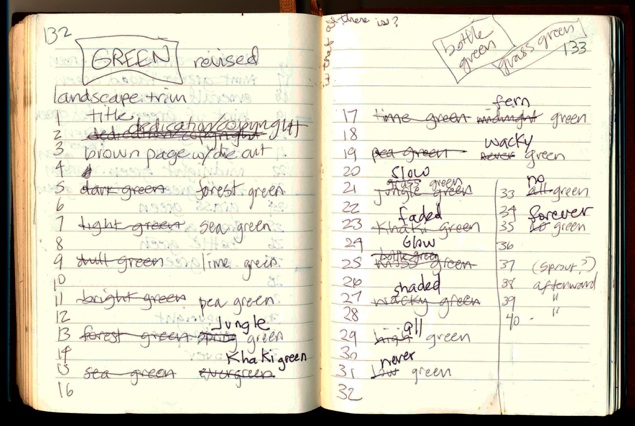 |
| First Art cover photo with images of children's artwork and a page from Green by Laura Vaccaro Seeger. |
First Art is a creative art exploration program targeted at children ages 18-36 months and their caregivers. Each session focuses on an art experience where children are freely explore art materials with as little adult direction as possible. I always tell caregivers that as long as their children are being safe, I'm comfortable with however they want to interact with the materials. Sometimes this means squeezing puddles of paint on the table (building hand strength) or throwing shredded paper in the air (learning cause and effect). Through open-ended sensory experiences, children develop creativity and a love of art.
Another essential component of First Art is picture book art. Each program features a picture book with artistic merit. Introducing these titles to children and caregivers encourages them to consider art when selecting books and discuss illustrations with their children.
I always start First Art with an overview of the program and the concept of process art. Next, we sing an opening song and read the featured book. Finally, I introduce the art materials we are using that session and invite children to create.
One of my favorite books to feature in First Art is Green by Laura Vaccaro Seeger. The many variations of the color green are a perfect inspiration for creating artwork (read my review of Green here). In this program, children create simple collages with paint and craft materials.
Green Supplies:
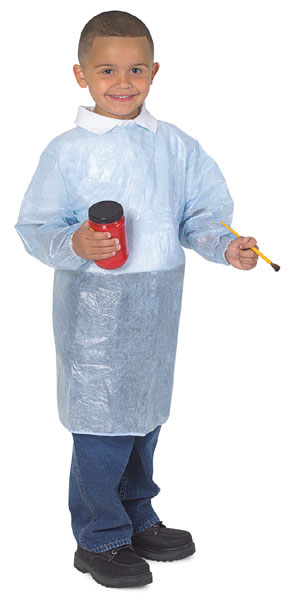 |
I love these smocks, and they are machine washable!
Line dry or use dryer no heat cycle to prevent the plastic
and fabric from separating, though. |
 |
| Adult and child discussing green creation. |
Once the materials are set out, step back and let the children explore! Watch the children observing each other, testing ideas, and discussing what they are doing with their adults.
First Art Tips:
- Keep materials out of children's reach until it's time to explore. Children are naturally drawn to the materials, and you'll never make it through a song and story if they can see them the whole time. I divide everything into containers so I can quickly put materials on the table after the story time component of the program. The last thing I do before art exploration is put out a container of smocks. This gives me a chance to distribute materials while everyone is putting on their smocks.
- Be prepared for mess. If you have a sink in your room, great! If not, fill a wide, shallow container with soapy water and place it on a low table or the floor. This will allow children to wash their hands during the program--and some will want to wash them every time something touches them.
- Be prepared for children who don't like getting messy. I love paint, play dough, and glue. The cool, slippery feeling of paint or the squishiness of play dough are some of my favorite things. Not all children at First Art do, though. If you plan a program that encourages children to get messy, always provide a touch-free way to explore as well. Paint brushes with finger paint or rolling pins with play dough are great options.
- Offer simple invitations to explore: Check out my First Art Presentation for favorite projects, recommended materials, and print and online resources.
- Consider requiring registration: This will depend on your location and resources, but I limit attendance to 15 children per session. We then offer two back to back sessions of the program to meet community interest. If you choose to offer multiple session, I highly recommend having a helper for cleanup between sessions.
First Art is one of my favorite programs to facilitate, and caregivers truly appreciate the library offering it. If you are looking to offer more programs for young children at your library, you can't go wrong with First Art!
